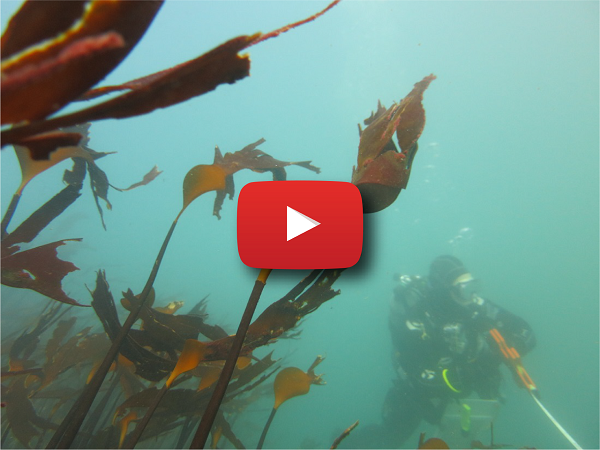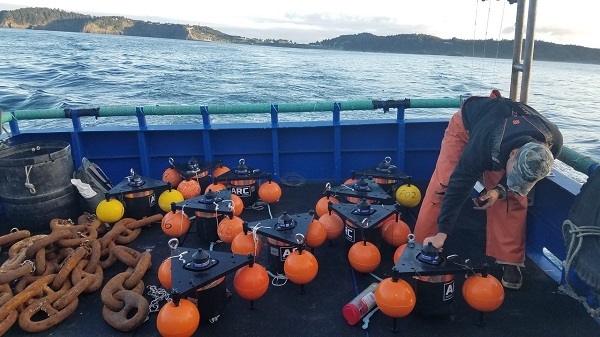Marine Reserves News: What Does Scientific Diving Take, New Research at Redfish Rocks, and More
ODFW sent this bulletin at 05/27/2021 07:40 AM PDT
This 12 minute video is part of the Oregon Coast Aquarium’s Deeper Dive series, highlighting a different animal or project at the Aquarium each month, followed by a Q&A session with Aquarium members.  Cape Falcon Management Plan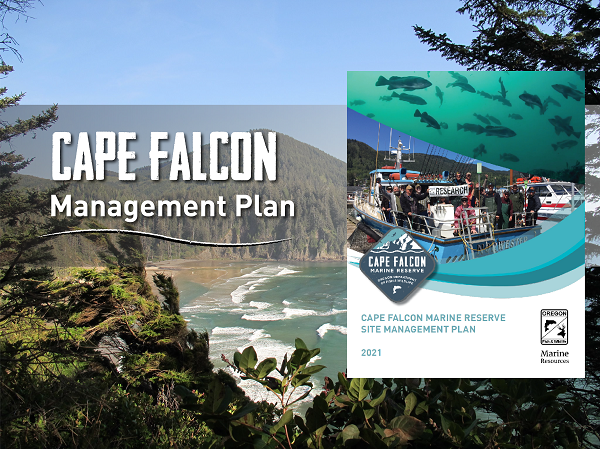
The Cape Falcon Management Plan is now available. The Plan outlines the state’s marine reserve mandates and describes the management, outreach, and engagement strategies that have been developed for the Cape Falcon Marine Reserve. These strategies were developed with assistance and collaboration from local community members, state and federal agencies, and other interested stakeholders. Thank you to everyone who provided comments on the draft plan. Site management plans, developed for each of the Oregon marine reserve sites, can be used for:
 How Do Fish and Crab Respond to Noise
|
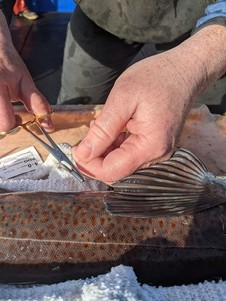
In early May, the grid system of moorings with acoustic receivers was deployed with the help of local fishermen out of Port Orford. In addition, researchers and fishermen on the F/V Alice Faye worked collaboratively to catch and tag 15 each of China rockfish, Black rockfish, lingcod, and female Dungeness crabs. This allows for about 3 weeks of tracking their “normal” behavior before the airgun survey vessel gets to southern Oregon. The receivers will stay out through the completion of the airgun survey (July) and another month afterward to continue to monitor their movements. At the end of the summer, the receivers will be retrieved from RRMR, the data downloaded, and analysis will begin. Stay tuned for updates on what fish and crabs are doing in RRMR normally and in response to this important geological survey. |
Updates From the Field
May has been a busy month - balancing data analysis for the ODFW Marine Reserves Synthesis Report with preparations for fieldwork. Here’s what’s been happening in the field …
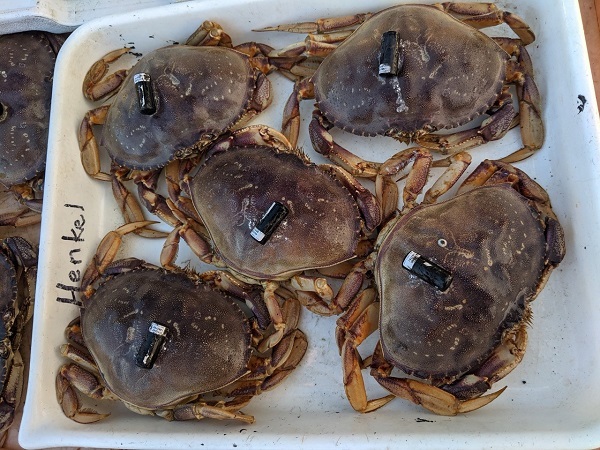
Photo: Tags are glued to the backs of Dungeness crabs to track their movements in response to noise produced during an NSF geological seismic survey that will be conducted this summer.
|
Cape Falcon: We built oceanographic moorings to collect data on temperature, salinity, and oxygen to track changing ocean conditions. The moorings were deployed in the reserve and in the Cape Meares comparison area by our local collaborator, the F/V Lady Lee, out of Garibaldi. Cascade Head: We built an oceanographic mooring and are scheduled to deploy it in early June. Cape Perpetua: The OSU-PISCO oceanographic mooring was serviced this month which included downloading the data, cleaning the sensors, and refreshing the batteries. Data from this year show that this is the earliest spring transition/ upwelling season on record. OSU-PISCO researchers are predicting we may experience low oxygen levels this summer off the Oregon coast. Check out this KGW News article and interview with Dr. Francis Chan and hear how commercial crabbers are collaborating to collect additional dissolved oxygen data off Oregon. Redfish Rocks: As part of the new collaborative research project between OSU and ODFW, to study fish and crab responses to noise generated from an NSF geological seismic survey this summer, our team added oceanographic sensors to the moorings that have been set up with acoustic receivers within the reserve. |
Otter Rock: Our research collaborators at OSU and the Oregon Coast Aquarium deployed SMURF moorings, for juvenile fish recruitment surveys, in the reserve and in the Cape Foulweather comparison area. We’ve also attached oceanographic sensors to the moorings to track temperature, salinity, and oxygen. |
Explore More Marine Reserves News


OREGONMARINERESERVES.COM
Oregon Department of Fish and Wildlife
2040 SE Marine Science Dr. Newport, OR 97365 (541) 867-4741


